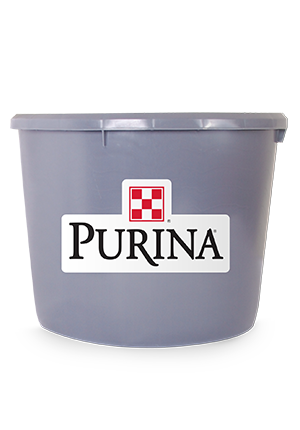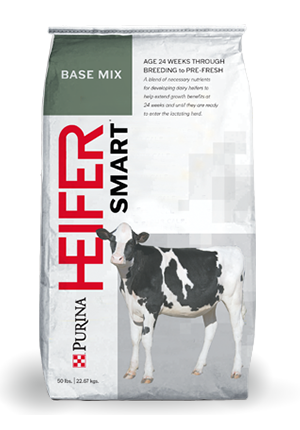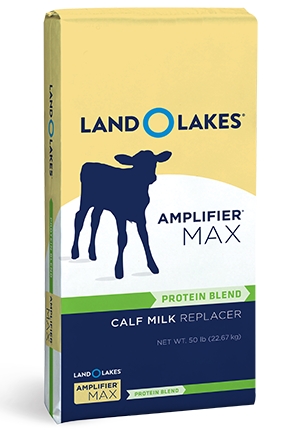
Dairy Risk Management: Prepare for the Unexpected
Cow : Management

If you've ever taken a ride on a rollercoaster, you know the range of emotions that come with the trip – the anticipation and excitement as the coaster starts to climb and the moment your stomach drops as you plummet to the bottom.
And while the ups and downs are fun for a day at the amusement park, that’s not what you want in your farm’s financials. Dairy farm profit margins can be below the breakeven costs for significant amounts of time with today’s volatility. With this in mind, a risk management program isn't a choice – it's a necessity to continue dairying in the future.
Dairy risk management tools are designed to support you through unexpected market dips to create a sustainable, long-term strategy for your business. A strategy you can feel confident in, even when markets are topsy turvy.
Here are three considerations to help you build a successful dairy risk management program:
Calculating your cost of production will help you understand your breakeven cost and potential profit margin. Using this calculation, you can set a maximum price on inputs (feed) and a minimum price on output (milk) to know your minimum margin to return a profit to the dairy.
For example, if your cost of production is $14/cwt, you can use a risk management strategy to balance buying feed and selling milk to return $15/cwt. Then, no matter what the markets do, you’ve protected your breakeven price and improved your profit margins.
Consider including these key team members in risk management discussions:
Dairy nutritionist: Your nutritionist can help answer many questions which will inevitably arise when looking at your cost of production and risk management program. What cuts will benefit breakeven margins but won't hinder cow health or production? How can you cut input costs without changing farm revenue? Your nutritionist can help find solutions to balance financials and cow health.
Risk management consultant: A risk management consultant's job is to understand the markets and risk management tools – ultimately, finding places to take some risk off the table. They can help you understand your cost of production, breakeven margin and help you develop a long-term strategy. Their goal is to help you build and maintain a sustainable, profitable business for generations to come.
Financial institution: It's important to have your lender on board and understand all aspects of business financials. It's also beneficial to show your lender your efforts to ensure your business's future financial health.
Other partners: Ensure all stakeholders are at the table – farm owners, crop advisors and anyone else who is integral to the farm's business decisions.
Risk management boils down to understanding your cost of production and how much money is coming back to your dairy. Ask your Purina nutritionist how you can get started with risk management today.
And while the ups and downs are fun for a day at the amusement park, that’s not what you want in your farm’s financials. Dairy farm profit margins can be below the breakeven costs for significant amounts of time with today’s volatility. With this in mind, a risk management program isn't a choice – it's a necessity to continue dairying in the future.
Dairy risk management tools are designed to support you through unexpected market dips to create a sustainable, long-term strategy for your business. A strategy you can feel confident in, even when markets are topsy turvy.
Here are three considerations to help you build a successful dairy risk management program:
1. Manage margins
A successful dairy risk management program doesn't mean you reach the peak of the rollercoaster ride every time. By removing some risk on the downside, you're also removing some opportunity on the upside. The goal is to create consistency, and the first step is knowing your cost of production.Calculating your cost of production will help you understand your breakeven cost and potential profit margin. Using this calculation, you can set a maximum price on inputs (feed) and a minimum price on output (milk) to know your minimum margin to return a profit to the dairy.
For example, if your cost of production is $14/cwt, you can use a risk management strategy to balance buying feed and selling milk to return $15/cwt. Then, no matter what the markets do, you’ve protected your breakeven price and improved your profit margins.
2. Work with trusted advisors
There's a lot on the line when creating and maintaining a dairy risk management program. While your strategy is ultimately your decision, lean on your team of advisors to help point you in the right direction.Consider including these key team members in risk management discussions:
Dairy nutritionist: Your nutritionist can help answer many questions which will inevitably arise when looking at your cost of production and risk management program. What cuts will benefit breakeven margins but won't hinder cow health or production? How can you cut input costs without changing farm revenue? Your nutritionist can help find solutions to balance financials and cow health.
Risk management consultant: A risk management consultant's job is to understand the markets and risk management tools – ultimately, finding places to take some risk off the table. They can help you understand your cost of production, breakeven margin and help you develop a long-term strategy. Their goal is to help you build and maintain a sustainable, profitable business for generations to come.
Financial institution: It's important to have your lender on board and understand all aspects of business financials. It's also beneficial to show your lender your efforts to ensure your business's future financial health.
Other partners: Ensure all stakeholders are at the table – farm owners, crop advisors and anyone else who is integral to the farm's business decisions.
3. Play the long game
Risk management is not a decision; it's an ongoing conversation about your business's financial health. And the sooner you start the conversation, the better. Mitigating risk in a volatile marketplace helps ensure your business will thrive for years to come.Risk management boils down to understanding your cost of production and how much money is coming back to your dairy. Ask your Purina nutritionist how you can get started with risk management today.


.png?width=300&height=430&ext=.png)

